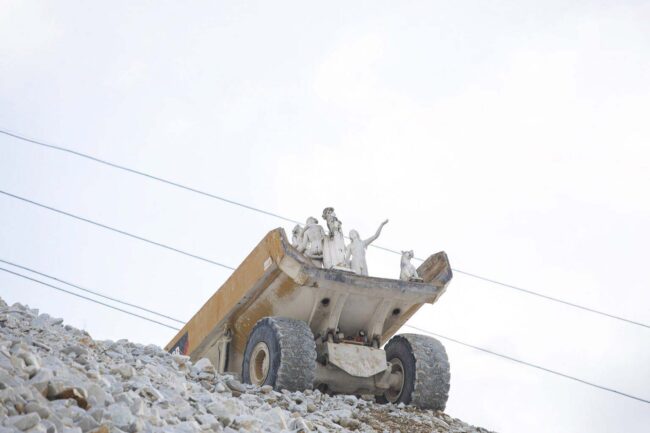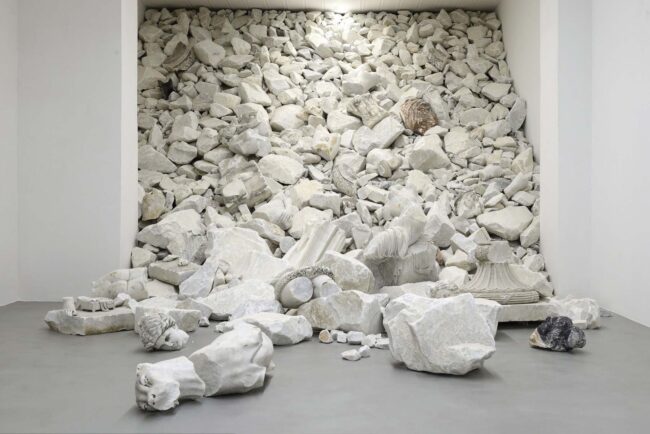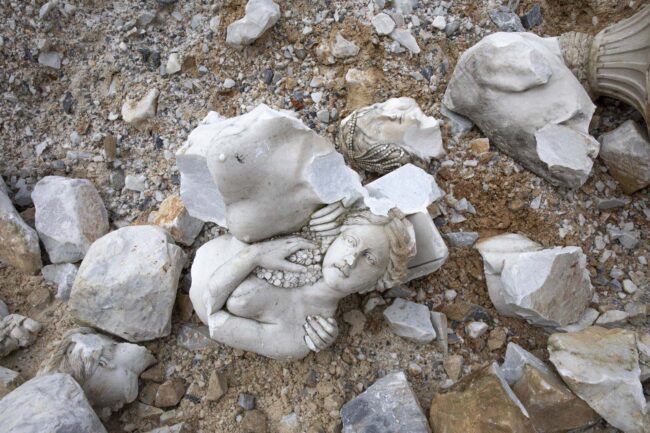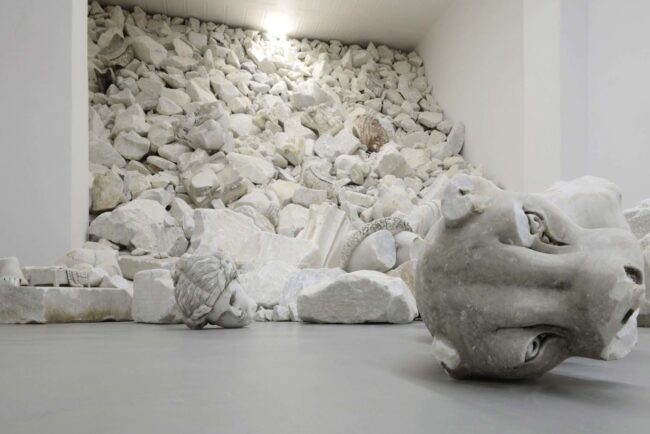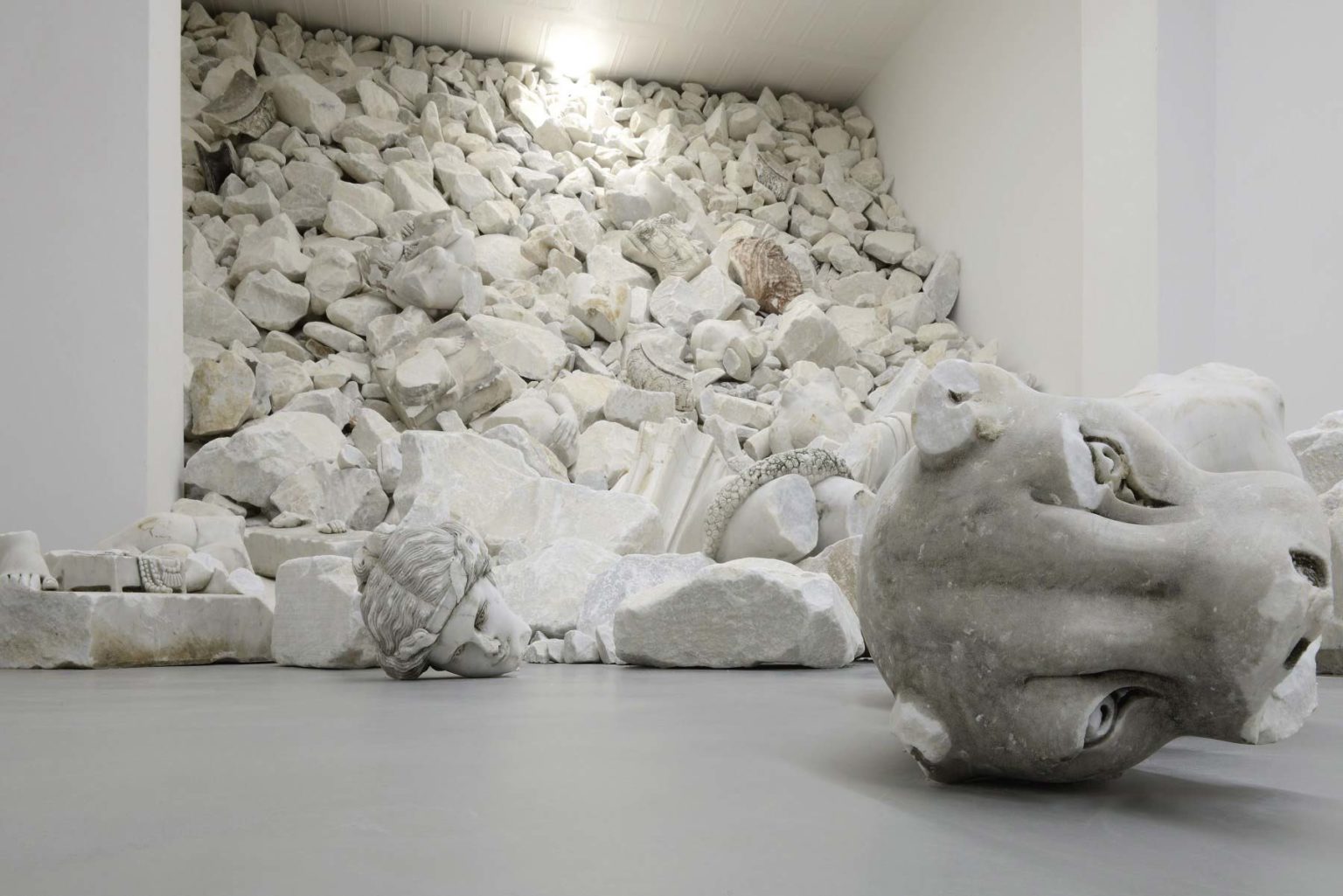Often thought of as opposites, beauty and destruction take on a unique relationship when it comes to the arts. As early as the 14th century, we’ve seen great works created from the pain and potent emotions of troubled times. Even when looking at some of the most celebrated works of Van Gogh, Picasso, or Munch, it is clear that suffering is an unavoidable part of the human condition. Italian sculptor Fabio Viale embraces this artistic truth in his tempestuous installation titled “Emergences”. As part of an overall exhibit titled “Acqua Alta”, which means hide tide, “Emergences” features chipped and fractured statues scattered in a cascade of broken marble. The smooth curves and sensuous form of the sculpted busts contrasted between the sharp edges of the marble ruins invite audiences to have a literal and metaphorical discussion on the beauty in destruction.

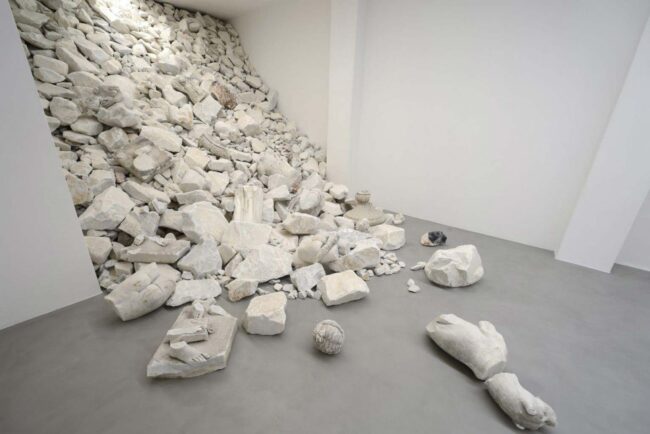
Consisting of fifteen tons of stone debris and ten tons of marble sculptures, the installation fills nearly fifteen meters of space. The demolished sculptures were once statues that Viale purchased at a souvenir shop. Viale bought a copy of the three graces, an Apollo, a guard dog, a nineteenth-century vase, the head of a moor, and a dancer. The detailed characteristics of these neoclassical sculptures in a sea of rubble can be seen with an observant eye. Each crack and blemish is the product of a prior performance Viale calls “Root’la”. Held at a marble quarry deposit, the performance involved Viale dumping these statues down the side of a mountain of marble, letting the statues become one with the landscape. The fall returns the sculptures to their origins as naturally shaped marble stones and symbolizes the cycles of life and nature.
Moulded from the Western vision of beauty, these disfigured sculptures still manage to portray an elegance and charm in their newly raw and rugged form. Their assimilation into what is considered waste and debris blurs the line between what is and isnt valuable.
